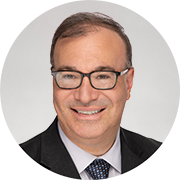Back-to-school season often means shopping for binders, laptops and lunch boxes. But if you're looking for the most valuable "school supply" of all, it’s hard to beat a well-funded Registered Education Savings Plan (RESP).
RESPs are one of the most generous government-supported savings vehicles available to Canadian families. Understanding some simple RESP strategies can make a meaningful difference in the total funds you have available by the time your future scholar heads off to post-secondary school.
Let’s start with the basics. A RESP allows your investments to grow tax-deferred, and more importantly, it comes with a powerful incentive: the Canada Education Savings Grant (CESG). The Canadian government will match 20% of your annual contributions, for up to $500 of grants for each year per child, with lifetime maximum CESGs of $7,200 per child.
If you’re starting late or have missed some years, don’t worry. The program allows you to catch up on unused CESG room. You can receive up to $1,000 per child in CESGs in a single year, which typically means contributing $5,000 to the RESP for each child. It’s a smart move if you’re playing catch-up and want to accelerate your education savings. Just keep in mind the lifetime RESP contribution limit of $50,000 per child.
Now, let’s talk strategy.
At certain times, it might make the most sense to prioritize RESP contributions over other registered accounts. I once spoke with a friend who had 5 kids and $25,000 earmarked for his Registered Retirement Savings Plan (RRSP). His plan was to contribute to the RRSP, take the tax refund (roughly $12,500 at a 50% marginal rate) and use that refund to fund the RESPs.
This is not a bad idea, but there may be a better strategy. By redirecting the full $25,000 into the RESPs immediately, he could have collected up to $5,000 in CESGs (20% of $5,000 for each child using the catch-up strategy). The RRSP room isn’t going anywhere; it can always be used later. But the CESGs can only be collected before a child reaches age 18.
Like any financial plan, timing matters. Starting early and contributing regularly is the gold standard. A parent who begins contributing $2,500 annually when their child is born can hit the $36,000 mark in contributions by age 14 and, assuming a modest 3% return, grow that RESP to more than $60,000 by age 18. Compare that to someone who starts at age 10. They might contribute the same amount overall but finish with $49,000 due to fewer years of compounding growth.
Of course, the growth inside a RESP is only part of the story. When it comes time to withdraw funds, smart planning continues to pay off. Educational Assistance Payments (EAPs), the portion of withdrawals that include CESGs and investment income, is taxed in the hands of the student. Given that most students have little or no taxable income, the actual tax bill is often zero.
This is what makes the RESP a rare gem. It's a savings vehicle that delivers government grants on the way in and tax-free income on the way out.
For families with the means to do more, consider topping up the RESP beyond the amount needed for CESGs. Though you only need to contribute $36,000 to get the maximum $7,200 in grants, you can contribute up to $50,000. There’s plenty of value in letting additional investments grow within the plan, potentially completely tax-free if withdrawn strategically.
RESPs aren’t just for parents either. Grandparents, aunts, uncles, even family friends can contribute towards a family member’s post-secondary education. Just make sure not to exceed the per-child limit across all plans.
With tuition costs rising and inflation adding extra strain to household budgets, every dollar counts. So, before you splurge on a new laptop, talk to your advisor about strategies for both saving and withdrawing funds effectively using RESPs. You might just find that the best way to support your child’s future is already at your fingertips.

